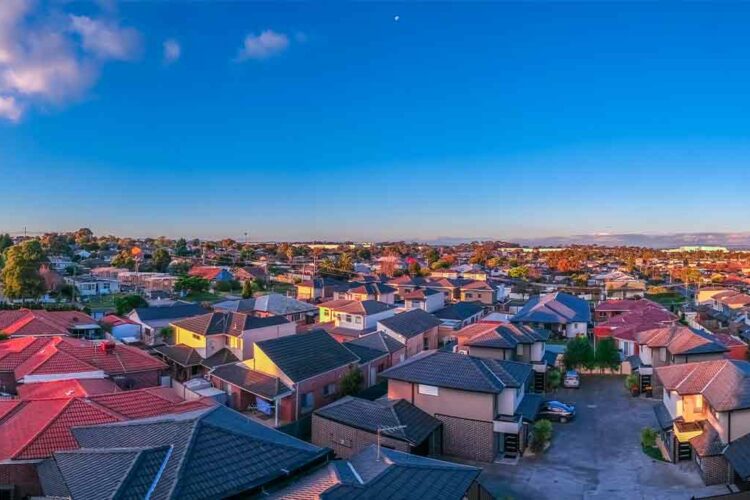Increased borrowing costs and tight serviceability requirements have contributed to a decline in new housing lending, with further reductions expected.
Industry commentators have raised concerns that increased borrowing costs and serviceability requirements will prevent more borrowers from entering the property market.
The Australian Prudential Regulation Authority (APRA) raised the serviceability buffer in October 2021 from 2.5 percentage points to 3.0 percentage points, meaning that new borrowers would be assessed 3 per cent above the lender’s interest rates.
Given the sharp increase in the cash rate, at 3.1 per cent, and lenders lifting their interest rates upwards of 5 per cent, many borrowers’ serviceability are now being assessed above 8 per cent.
Thus, as the cost of debt and serviceability assessment has increased, new housing lending has fallen, with the Australian Bureau of Statistics (ABS) November data reporting that the total value of new housing lending fell for the 10th consecutive month, down by 3.7 per cent to just $24.73 billion.
In addition, lending to owner-occupiers fell by 3.8 per cent, while first home buyers have also pulled out of the market, falling by 5.7 per cent.
Broker Rebecca Jarrett-Dalton at Two Red Shoes said first home buyers were “cautious about entering the market right now because of rising interest rates” and serviceability challenges.
She said a “replacement” loan assessment allowing dollar-for-dollar refinances where clients would save interest with no buffered assessment would be helpful.
Adding that, this would “effectively release mortgage prisoners from higher interest rates where they don’t meet the current increased buffer but are making their payments anyway”.
Property Investors Council of Australia (PICA) Chair Ben Kingsley said if APRA doesn’t move the buffer rate at all this year, it will “cause unnecessary pain on more households than needed”.
“If the cash rate pushes to mid-three per cent and even beyond, we will continue to see a very sluggish market with further price corrections even if APRA do adjust their buffer rate down.”
APRA’s serviceability buffers were introduced in December 2014 as a way of tempering the runaway housing market, and the increase was “designed to reinforce the stability of the financial system”, the regulator noted.
However, it also followed the removal of the 7 per cent floor in 2019, which increased borrowers’ lending power and resulted in a surge in new home loans to market and a property price boom as cheap credit was readily available.
For example, variable rates got down to around 2.5 per cent and below, meaning some borrowers could have been tested against mortgage rates as low as 5 per cent, once the 7 per cent floor was removed.
The Federal Treasurer has cited concerns over these borrowers who took out a “mortgage relatively recently when interest rates were incredibly low,” and particularly “when the fixed component of their loan comes off”.
Meanwhile, head of research at InvestorKit, Arjun Paliwal, has tipped that the slowdown in lending could force banks to consider changes to their servicing.
“The banks will need to find a way to bring borrowers back as borrowing capacity declines and shrinks credit uptake.
“Banks like NAB have already started the trend for investors through how they calculate rental income.”


